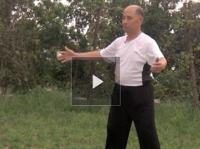-
- The elbow and waist (from one side of the waist to the other side) must have a connection through the waist (side wall of the waist and shoulder on the same side). In this case the functional modifier is the kua.
 The elbow and waist must stay on a curved or straight line, causing this connection.
The elbow and waist must stay on a curved or straight line, causing this connection.- Closing means to move inward, causing the distance between the elbow and waist to shorten.
- The elbow and waist can never move away from each other (please note that the meaning of this requires further clarification later on).



{ 3 comments… read them below or add one }
To be symmetric to the hand-foot post, I would have expected elbow and knee rather than elbow and waist. I am puzzled by the concept of this post, in particular, “The elbow and waist must have a connection through the waist”.
Master Chen, could you please help clarify?
Elbow and knee combination is certainly correct according to taiji principles. However, it does not mean that the elbow cannot work with other parts of the body. In the present case, the elbow can work with the waist. It is important to view the following in context: hand foot is one pair that is outside; elbow and waist is another pair that is inside. The key is that the outside pair can only have outward active movements while the inside pair can only have inward movement intentions.
Thank you. “The key is that the outside pair can only have outward active movements while the inside pair can only have inward movement intentions” clarifies it, especially with the word “active”. I believe the following are all related:
Elbow in, hand out.
Withdraw is to issue.
The foot in the hand-foot concept is the counter part of the hand on the other side of the fixed point.
The waist (on the other side) in the elbow-waist concept is the counter part of the elbow on the other side of the fixed point.